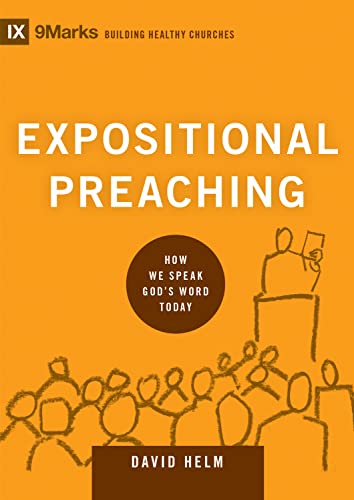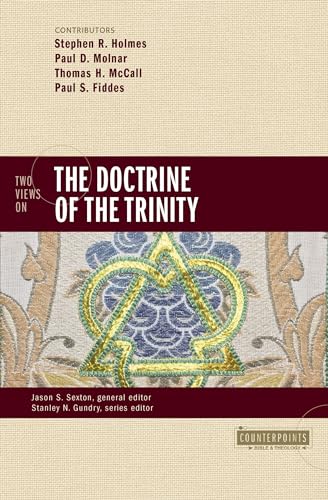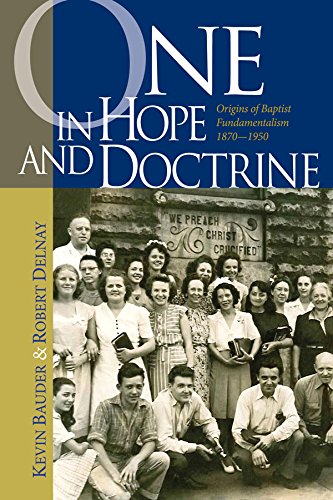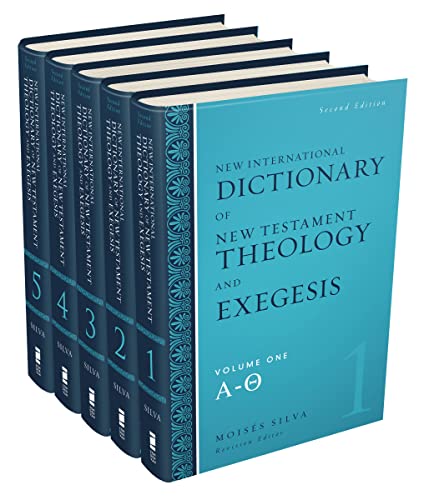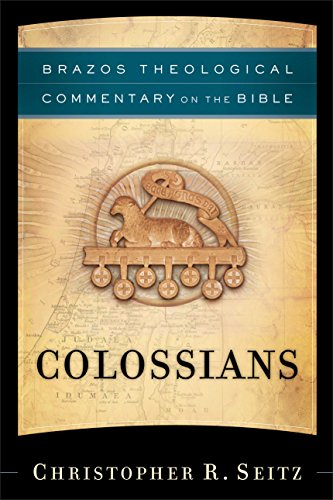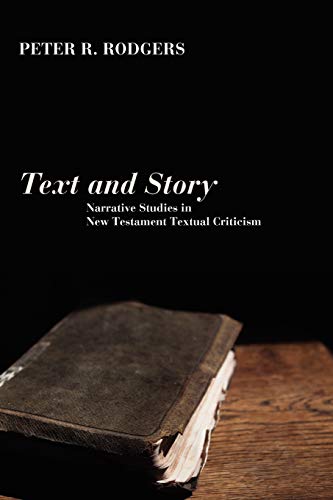Expositional Preaching: How We Speak God’s Word Today
Written by David Helm Reviewed By Chris BrunoAmong some Christians familiar with 9Marks, there is a perception that Mark Dever, Jonathan Leeman, and their ilk are unnecessarily rigid in their view of the church. I confess there was a time when I thought this myself. But the longer I have served in ministry, the more I study the Bible, and the more I consider the most faithful way to implement the Bible’s teaching on the church, I have come to just the opposite conclusion. While I still disagree with these brothers here and there, I find their vision for church life and ministry compelling and—more importantly—faithful to the Bible’s teaching about the church. So when presented with the opportunity, I was quite happy to review Crossway’s 9Marks: Building Healthy Churches series.
As I set out to review the series, I was not sure in quite what order to read the books. I tried to read them in an order that makes sense, but some of my impressions may be shaped by the order in which I read them and by the simple fact that I read all seven books relatively quickly, rather than just one or two over the course of a longer Bible study or course. Having said that, my aim in this review is not to provide detailed comments on the content or argument of any of these books. Rather, I will give a short summary of what each author was trying to accomplish it, make a few observations, and add a few thoughts about how these books might be used in concert with each other and in the local church context.
The first book that I read in the series was Ray Ortlund’s The Gospel: How the Church Portrays the Beauty of Christ. Ortlund’s main argument was simple: gospel doctrine should create a gospel culture. This is true for individuals, for the church, and ultimately for the whole creation. Therefore, when an “anti-gospel culture” is found in a church—that is to say, a gospel where the grace of God is not celebrated and lived out in humane relationships—the gospel is actually denied in practice, whatever the church believes on paper. The last part of the book then sets out some suggestions about our need for the Spirit to give us power, courage, and love to actually implement a gospel culture in our churches.
Beginning with Ortlund’s book would be a great way to start to reading through this series. It also sets the tone well for the remaining books—while the 9Marks guys are typically well-known for their Baptist distinctives, it is healthy to have an Acts 29 pastor of Presbyterian convictions introduce the 9Marks series on building a healthy church. While there can, should, and will be denominational differences, we can unite around the gospel and build a movement that is truly centered on the gospel and not simple platitudes.
The next volume that I chose was David Helm’s Expositional Preaching: How We Speak God’s Word Today. Helm begins with a definition: “Expositional preaching is empowered preaching that rightfully submits the shape and emphasis of the sermon to the shape and emphasis of a biblical text” (p. 13). From this, he then describes preaching that masquerades as expositional preaching but is not actually rooted in the shape and emphasis of the text. This chapter alone is worth reading the book. The remainder of the book helpfully draws out the necessary steps through exegesis, theological reflection, and application that rises from the text itself.
While many preachers and teachers talk about expositional preaching, too often this means preaching that merely refers to the Bible or preaching that is simple exegesis without any meaningful theological reflection (let alone significant, gospel-shaped application). Helm’s book could be a useful tool for both pastors and pastors-in-training as well entire congregations who are not used to preaching that is shaped by the Scriptures in both the near and broad context of the text each week. More than ever, I am convinced that people need to hear the Bible but many pastors unknowingly fail to give it to their people. Helm’s book could be used as a great step forward in remedying this problem.
After the gospel and preaching, I decided the next step forward should be church membership, so I read Jonathan Leeman’s book Church Membership: How the World Knows Who Represents Jesus. Those who are familiar with the 9Marks world know that Leeman has thought more about church membership than anyone since Benjamin Keach. His years of careful thinking about this topic have certainly paid off in this little book. Leeman attempts to reshape the way we think about church membership. Whereas many Christians tend to think of the church as a voluntary club, Leeman wants us to see it as an embassy. An embassy doesn’t define citizenship—it recognizes citizenship. In the same way a church doesn’t define who is a part of God’s people—it recognizes this. So, to extend his analogy, if we refuse to join and submit to a church, we are in danger of renouncing our citizenship in God’s kingdom.
While the entire book is a helpful description of the necessity and practice of church membership, if you (or others you know) are skeptical of church membership, take them to chapter 8: “Should Membership Look the Same Everywhere?” Here Leeman compares his church in Washington, D.C. to a church in central Asia. While there are many differences in structure and practical outworking of membership, he argues that the churches in both places have the same essential function: “the proclamation, display, and protection of the gospel through the lives of its formally affirmed members” (p. 129). For both church membership skeptics and others, this book could be a great tool in a membership class or other setting.
After Leeman’s book on church membership, it makes sense to read next his other book in this series: Church Discipline: How The Church Protects the Name of Jesus. It is essentially an expansion of aspects of his church membership book. Unlike the membership book, though, Leeman does not spend much energy trying to convince us about the need for church discipline. He writes, “The main purpose of this book is not to persuade you about church discipline. It’s to help the already-persuaded know how and when to practice it” (p. 17). Leeman takes what he calls the “theological-framework approach” to church discipline (p. 18). More specifically, he applies a “Gospel Framework” for understanding discipline. For Leeman, church discipline not about “correcting sin or blowing whistles”; rather, the central issue is “ensuring that church members are indeed representing Jesus rightly” (p. 45). In other words, the pastoral question we must always be asking when considering a discipline case is “whether the church can continue to affirm a profession of faith”—not whether X, Y, or Z Big Issue sin has been committed. This approach “allows for greater pastoral sensitivity in moving from situation to situation” (p. 51).
This book could be a valuable tool to introduce in a new members class or as a follow-up to the course. The second and third parts of the book that deal with case studies and the necessary preparation for church discipline will be a great help to an elder team wrestling through the issue as well. In an age when church discipline is either ignored or misunderstood and misapplied, this book can be a helpful corrective and guide for many.
While I appreciated aspects of all the books in this series, my favorite was probably Mack Stiles’s Evangelism: How the Whole Church Speaks of Jesus. Many books on evangelism leave you fired up but also a little guilty. This book left me both fired up and encouraged about creating a culture of evangelism in my home and church. Stiles writes, “In pursuing a healthy culture of evangelism, we don’t remake the church for evangelism. Instead, we allow the things that God has already built into the church to proclaim the gospel. Jesus did not forget the gospel when he built the church” (p. 64). The book is an encouragement to pastors and other church members to start talking more about evangelism, and it is filled with practical advice about helping people understand the gospel and prioritize evangelism.
I cannot think of a church context in which this book would not be helpful, but obviously many churches in the West need to understand and emphasize evangelism afresh. To these churches, Stiles writes, “It’s my sense that boldness is the most needed element for evangelism for the Christian community, at least in North America” (p. 106). But he is quick to warn us not to despair and turn our focus away from what God is doing in us through our evangelistic efforts. He observes, “Part of my weariness in evangelism is the constant focus on what is supposed to happen in others. When that is my focus and nothing seems to happen, I lose heart. But knowing that God works in me when I actively share my faith gives me hope even when no one responds positively to my efforts” (p. 112). Read this little book and be encouraged to share your faith.
The next book I read was Jeramie Rinne’s Church Elders: How to Shepherd God’s People Like Jesus. The main burden of this book is to convince church elders that they are indeed shepherds. Rinne writes, “If you remember only one thing from this book, then, let it be that elders are pastors/shepherds, and their core job is to tend the church’s members like shepherds tend their sheep” (p. 35). Beyond this, the book is devoted to describing from the Bible what it looks like for a team of elders to shepherd the sheep. Once they have worked through and affirmed the biblical qualifications for elders, they are to live among the sheep, devoting themselves to the Word and the wise, prayerfully, and loving care of the sheep. Rinne does a particularly good job unpacking what humble and wise pastoral care looks like in the Scriptures.
The best way to use this book would probably be among an already existing elder board, ideally in a new church plant or in a church that is establishing (or re-thinking) the roles and responsibilities of their non-paid elders. In fact, I would probably encourage every elder team to read this book and think together about how their team is doing at fulfilling their calling and caring for the sheep that God has entrusted to their care—especially with respect to the last chapter, praying for their flock.
I’m not sure why I read Bobby Jamieson’s Sound Doctrine last, but it seemed to fit. As I reflect on the series as a whole, it was a good capstone to reading all of these books about what a healthy church should be. As Jamieson argues in the book, sound doctrine must be useful for life and it must be useful for the life of the church. Jamieson first summarizes what he means by sound doctrine: “Sound doctrine is a summary of the Bible’s teaching that is both faithful to the Bible and useful for life” (p. 17). After unpacking this, he then outlines how sound doctrine is the essential foundation for Christian obedience. Jamieson highlights the necessity of sound doctrine for teaching the Bible, living holy lives, loving God and others, unity, worship, witness, and ultimately our own joy.
If you are reading sequentially through this series, landing with this book could be helpful as you consider how to move forward as an elder team or Sunday school class, because it is full of practical motivation for serious study of the Bible. Jamieson does a great job of showing the direct connections between faithful Christian understanding and faithful Christian living. He also shows why these things matter for the church as a whole by pointing to specific ways that sound doctrine should lead us into deeper fellowship with each other and shared mission in local churches. After all, this series is about building healthy churches.
As I write this review, I am transitioning from serving as a pastor to a professor. I intend to use these books as a basis for training people—both at my school and in the church where the Lord places us—about the centrality and importance of a healthy local church. These are a great series of tools for doing just that. Because of this, I am very thankful for the ministry of 9Marks, and I am thankful for Crossway’s willingness to publish the “9Marks: Building Healthy Churches” series.
Chris Bruno
Chris Bruno
Trinity Christian School
Kailua Baptist Church
Kailua, Hawaii, USA
Other Articles in this Issue
The account of Abraham's near-sacrifice of Isaac has been and will likely continue to be violently applied so long as the dominant misunderstanding of the text prevails...
In recent years, a growing cadre of younger historians has begun publishing significant books on the history of American evangelicalism...
Romans 4 remains a central text in the debate over the New Perspective on Paul...
Within the intra-Reformed debate over baptism, covenant theology is a crucial aspect in determining one's position...
‘Fathers of Faith, My Fathers Now!’: On Abraham, Covenant, and the Theology of Paedobaptism
by David GibsonThe figure of Abraham creates a covenantal framework for biblical theology that allows baptism to be considered in relation to the Bible's developing story line...


